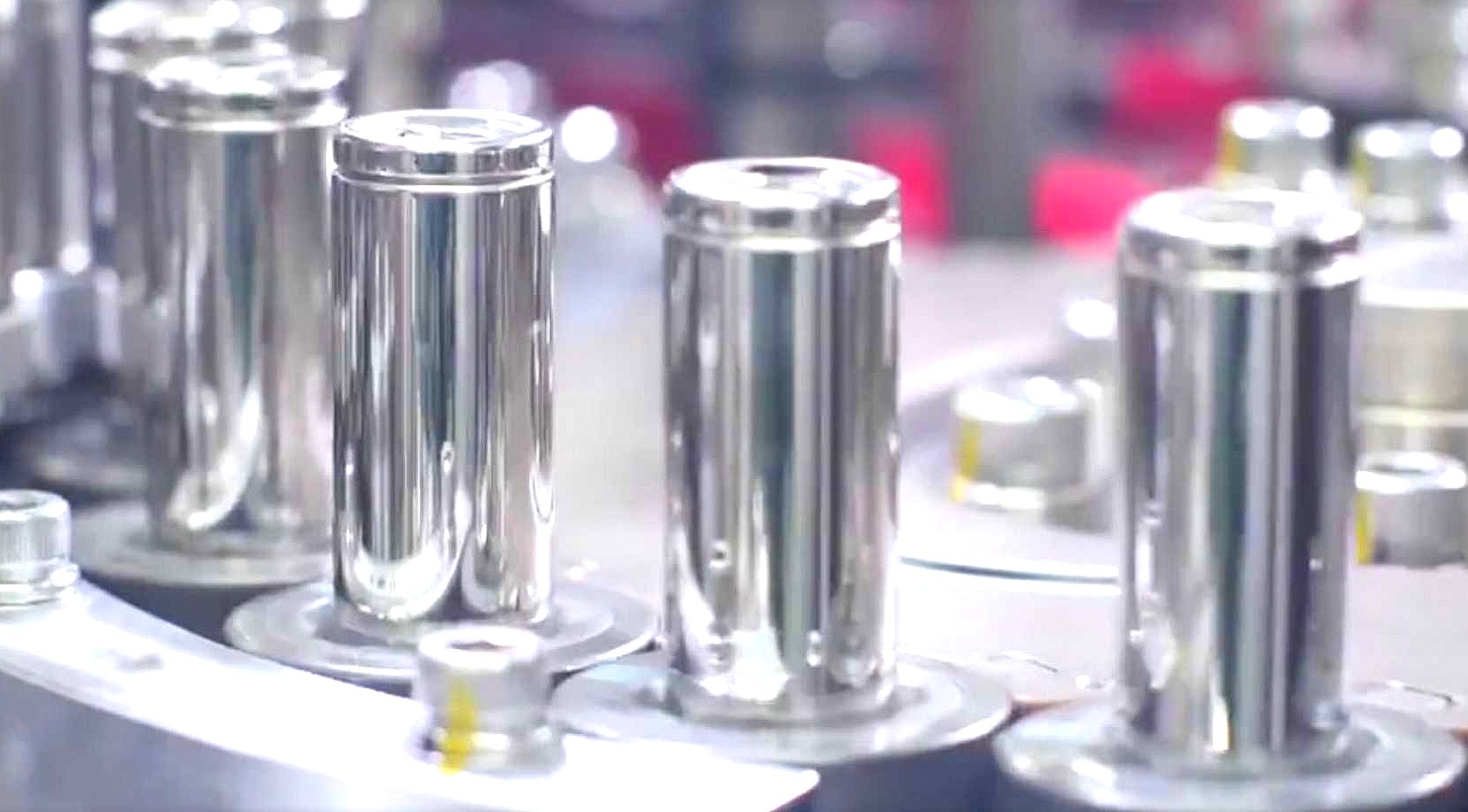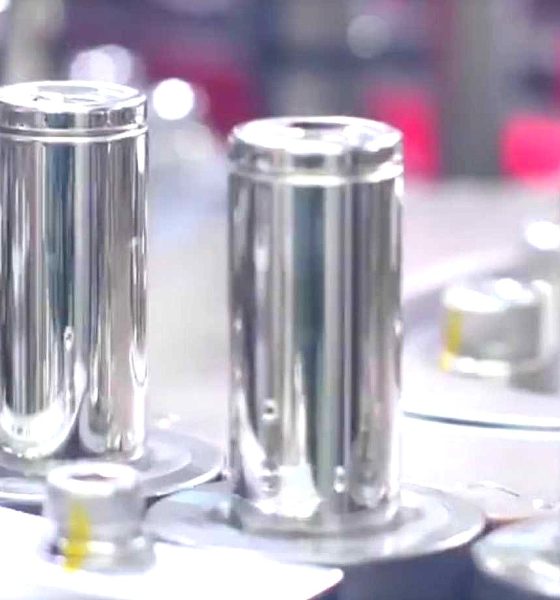

News
Tesla on track to increase battery energy density by 20%, reveals Panasonic executive
Tesla’s 2170 battery cells will increase in energy density by 20% in five years, the head of Panasonic’s U.S. EV battery business said. Panasonic supplies Tesla with the cells for its mass-market Model 3, which was manufactured for the first time in 2017.
Additionally, Panasonic will work to commercialize a cobalt-free version of its batteries for Tesla “in two to three years.” Cobalt-free cells would increase the positive environmental impact of driving an electric vehicle. One of Tesla’s main goals is to phase away from cobalt batteries, which is a controversial but crucial element to EV batteries.
The move from Panasonic is unprecedented and marks the first time a cell manufacturer that provides Tesla with batteries has put definitive future targets that will ensure the company stays ahead of its competitors for years to come. Reuters initially reported the findings.
Panasonic initially manufactured the 2170 lithium-ion battery cells for the Model 3. The cells are comprised of a nickel-cobalt-aluminum, or NCA, cathode chemistry, which has extremely high energy density.
High energy density means that vehicles can have increased range per charge. But their small size allows for increased spaciousness and lighter cars. Battery packs in electric vehicles tend to make up a majority of the car’s weight.
However, the company’s intention to have a cobalt-free EV battery cell within the next two to three years would revolutionize the way cars can operate. Cobalt, while useful and crucial for element stability in EV batteries, is highly controversial because of mining practices. In the Democratic Republic of Congo, it is highly reported that many of the miners are children.
This creates issues for companies that wish to remain ethical, but require the element because it is highly-functional in batteries.
Tesla has long maintained that it uses a series of due diligence practices to ensure that the cobalt it obtains is mined responsibly. In the company’s 2019 Environmental Impact Report, it stated that “Tesla is committed to making working conditions in our supply chain safe and humane, ensuring that workers are treated with respect and dignity, and that manufacturing processes are environmentally responsible.”
Eliminating cobalt from batteries would also increase the cost-effectiveness of the manufacturing process and would decrease the cost of Tesla’s vehicles.
Panasonic has been working on cutting cobalt content in its batteries to under 5% in the NCA cathode. It also plans to continue improving the battery cells in stages, according to Yasuaki Takamoto, who is Panasonic’s U.S. EV battery chief.
At the Tesla Gigafactory in Sparks, Nevada, Panasonic will begin converting lines at the factory to boost cell energy density.
Tesla will unveil developments in the company’s battery cells on September 22 at the company’s Battery Day.
Tesla has worked diligently with battery manufacturers to develop cells that will increase efficiency and decrease environmental impact. Additionally, the company has rolled out several updates that work to increase the efficiency of its vehicles. Most recently, the company’s Model Y received an update that deactivated the passenger side air vents when the seat is not occupied, which will make small efficiency changes.
Should add a few miles of range, more in slow traffic
— Elon Musk (@elonmusk) July 29, 2020

News
Tesla FSD fleet is nearing 7 billion total miles, including 2.5 billion city miles
As can be seen on Tesla’s official FSD webpage, vehicles equipped with the system have now navigated over 6.99 billion miles.

Tesla’s Full Self-Driving (Supervised) fleet is closing in on almost 7 billion total miles driven, as per data posted by the company on its official FSD webpage.
These figures hint at the massive scale of data fueling Tesla’s rapid FSD improvements, which have been quite notable as of late.
FSD mileage milestones
As can be seen on Tesla’s official FSD webpage, vehicles equipped with the system have now navigated over 6.99 billion miles. Tesla owner and avid FSD tester Whole Mars Catalog also shared a screenshot indicating that from the nearly 7 billion miles traveled by the FSD fleet, more than 2.5 billion miles were driven inside cities.
City miles are particularly valuable for complex urban scenarios like unprotected turns, pedestrian interactions, and traffic lights. This is also the difference-maker for FSD, as only complex solutions, such as Waymo’s self-driving taxis, operate similarly on inner-city streets. And even then, incidents such as the San Francisco blackouts have proven challenging for sensor-rich vehicles like Waymos.
Tesla’s data edge
Tesla has a number of advantages in the autonomous vehicle sector, one of which is the size of its fleet and the number of vehicles training FSD on real-world roads. Tesla’s nearly 7 billion FSD miles then allow the company to roll out updates that make its vehicles behave like they are being driven by experienced drivers, even if they are operating on their own.
So notable are Tesla’s improvements to FSD that NVIDIA Director of Robotics Jim Fan, after experiencing FSD v14, noted that the system is the first AI that passes what he described as a “Physical Turing Test.”
“Despite knowing exactly how robot learning works, I still find it magical watching the steering wheel turn by itself. First it feels surreal, next it becomes routine. Then, like the smartphone, taking it away actively hurts. This is how humanity gets rewired and glued to god-like technologies,” Fan wrote in a post on X.
News
Tesla starts showing how FSD will change lives in Europe
Local officials tested the system on narrow country roads and were impressed by FSD’s smooth, human-like driving, with some calling the service a game-changer for everyday life in areas that are far from urban centers.

Tesla has launched Europe’s first public shuttle service using Full Self-Driving (Supervised) in the rural Eifelkreis Bitburg-Prüm region of Germany, demonstrating how the technology can restore independence and mobility for people who struggle with limited transport options.
Local officials tested the system on narrow country roads and were impressed by FSD’s smooth, human-like driving, with some calling the service a game-changer for everyday life in areas that are far from urban centers.
Officials see real impact on rural residents
Arzfeld Mayor Johannes Kuhl and District Administrator Andreas Kruppert personally tested the Tesla shuttle service. This allowed them to see just how well FSD navigated winding lanes and rural roads confidently. Kruppert said, “Autonomous driving sounds like science fiction to many, but we simply see here that it works totally well in rural regions too.” Kuhl, for his part, also noted that FSD “feels like a very experienced driver.”
The pilot complements the area’s “Citizen Bus” program, which provides on-demand rides for elderly residents who can no longer drive themselves. Tesla Europe shared a video of a demonstration of the service, highlighting how FSD gives people their freedom back, even in places where public transport is not as prevalent.
What the Ministry for Economic Affairs and Transport says
Rhineland-Palatinate’s Minister Daniela Schmitt supported the project, praising the collaboration that made this “first of its kind in Europe” possible. As per the ministry, the rural rollout for the service shows FSD’s potential beyond major cities, and it delivers tangible benefits like grocery runs, doctor visits, and social connections for isolated residents.
“Reliable and flexible mobility is especially vital in rural areas. With the launch of a shuttle service using self-driving vehicles (FSD supervised) by Tesla in the Eifelkreis Bitburg-Prüm, an innovative pilot project is now getting underway that complements local community bus services. It is the first project of its kind in Europe.
“The result is a real gain for rural mobility: greater accessibility, more flexibility and tangible benefits for everyday life. A strong signal for innovation, cooperation and future-oriented mobility beyond urban centers,” the ministry wrote in a LinkedIn post.
News
Tesla China quietly posts Robotaxi-related job listing
Tesla China is currently seeking a Low Voltage Electrical Engineer to work on circuit board design for the company’s autonomous vehicles.

Tesla has posted a new job listing in Shanghai explicitly tied to its Robotaxi program, fueling speculation that the company is preparing to launch its dedicated autonomous ride-hailing service in China.
As noted in the listing, Tesla China is currently seeking a Low Voltage Electrical Engineer to work on circuit board design for the company’s autonomous vehicles.
Robotaxi-specific role
The listing, which was shared on social media platform X by industry watcher @tslaming, suggested that Tesla China is looking to fill the role urgently. The job listing itself specifically mentions that the person hired for the role will be working on the Low Voltage Hardware team, which would design the circuit boards that would serve as the nervous system of the Robotaxi.
Key tasks for the role, as indicated in the job listing, include collaboration with PCB layout, firmware, mechanical, program management, and validation teams, among other responsibilities. The role is based in Shanghai.
China Robotaxi launch
China represents a massive potential market for robotaxis, with its dense urban centers and supportive policies in select cities. Tesla has limited permission to roll out FSD in the country, though despite this, its vehicles have been hailed as among the best in the market when it comes to autonomous features. So far, at least, it appears that China supports Tesla’s FSD and Robotaxi rollout.
This was hinted at in November, when Tesla brought the Cybercab to the 8th China International Import Expo (CIIE) in Shanghai, marking the first time that the autonomous two-seater was brought to the Asia-Pacific region. The vehicle, despite not having a release date in China, received a significant amount of interest among the event’s attendees.








